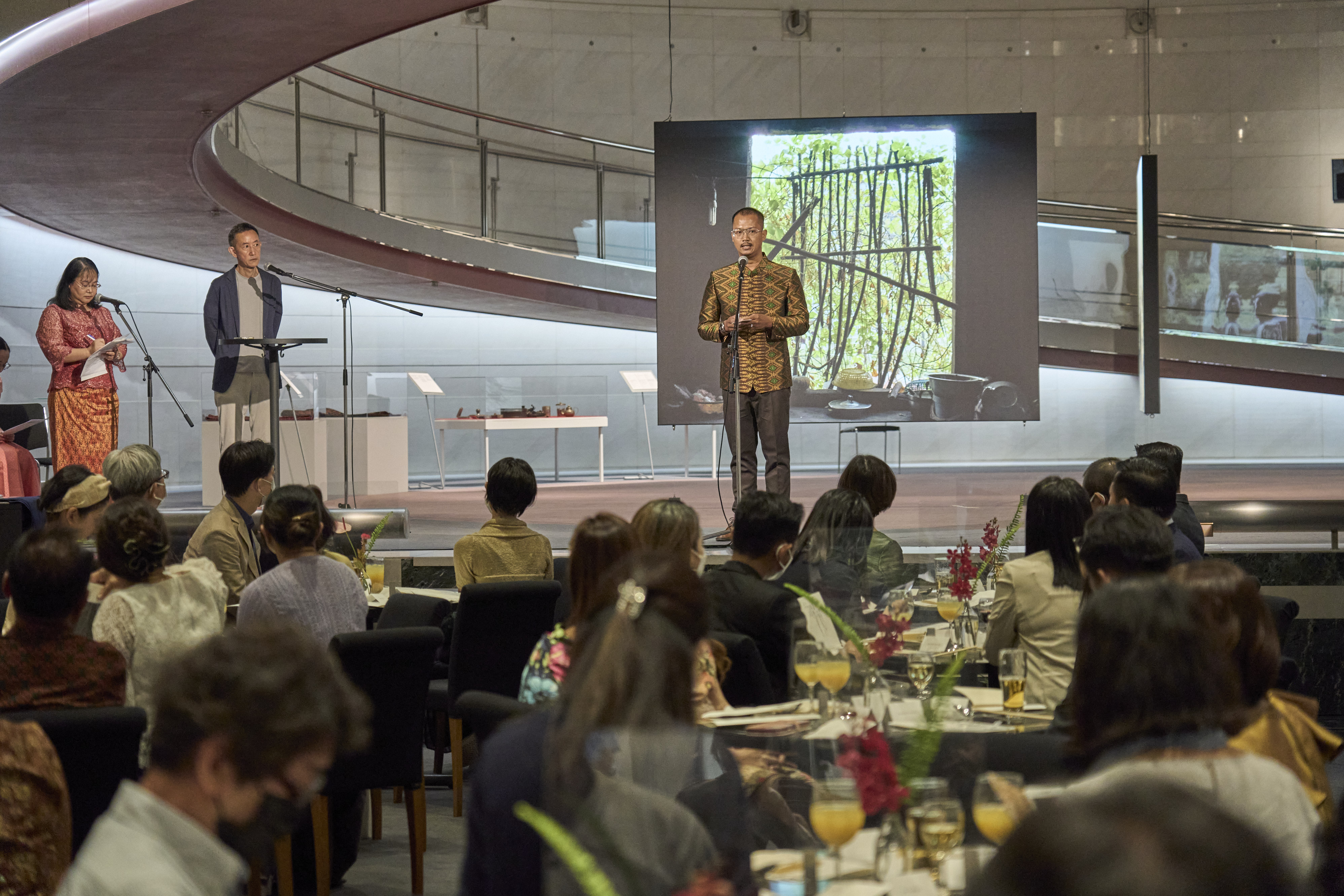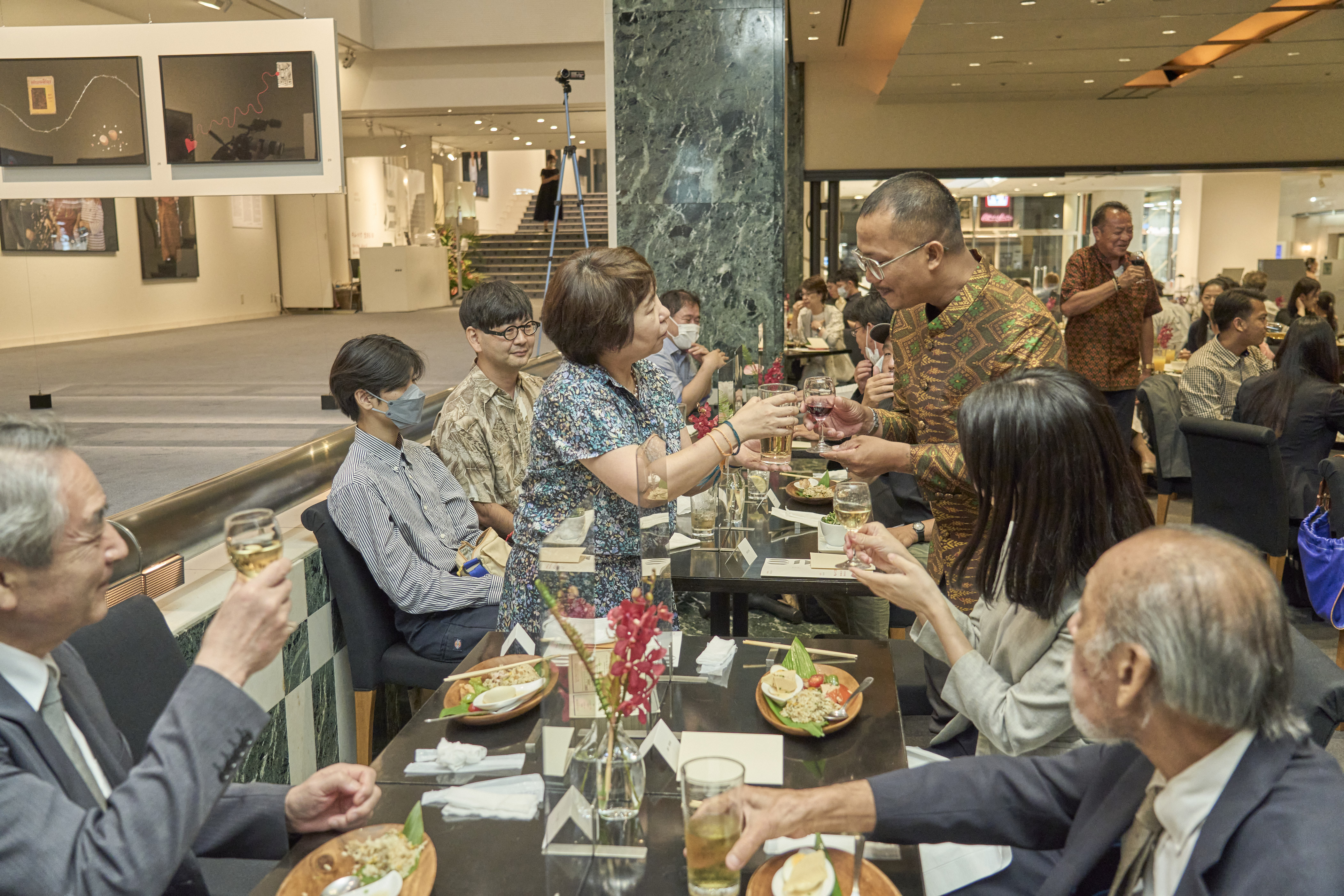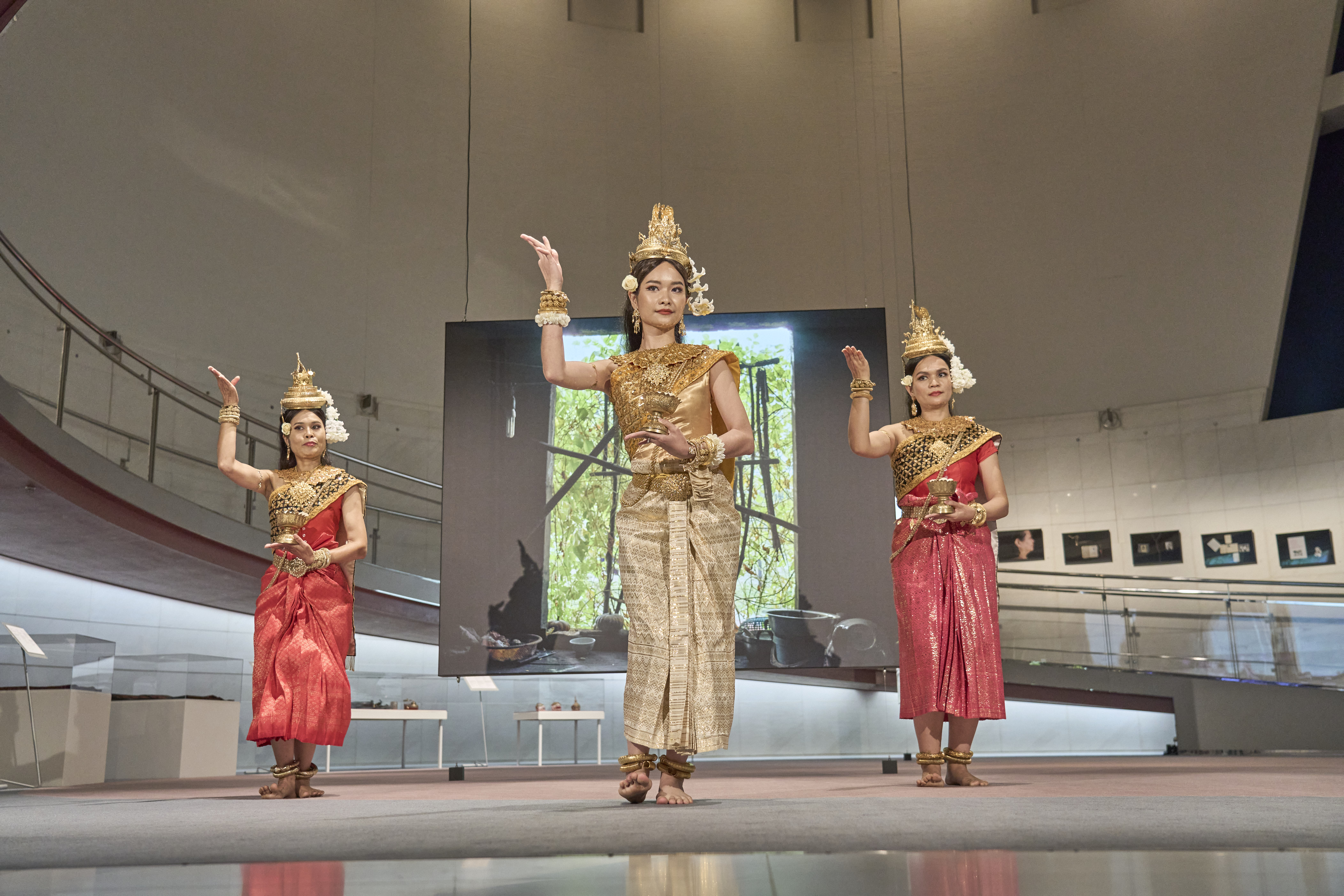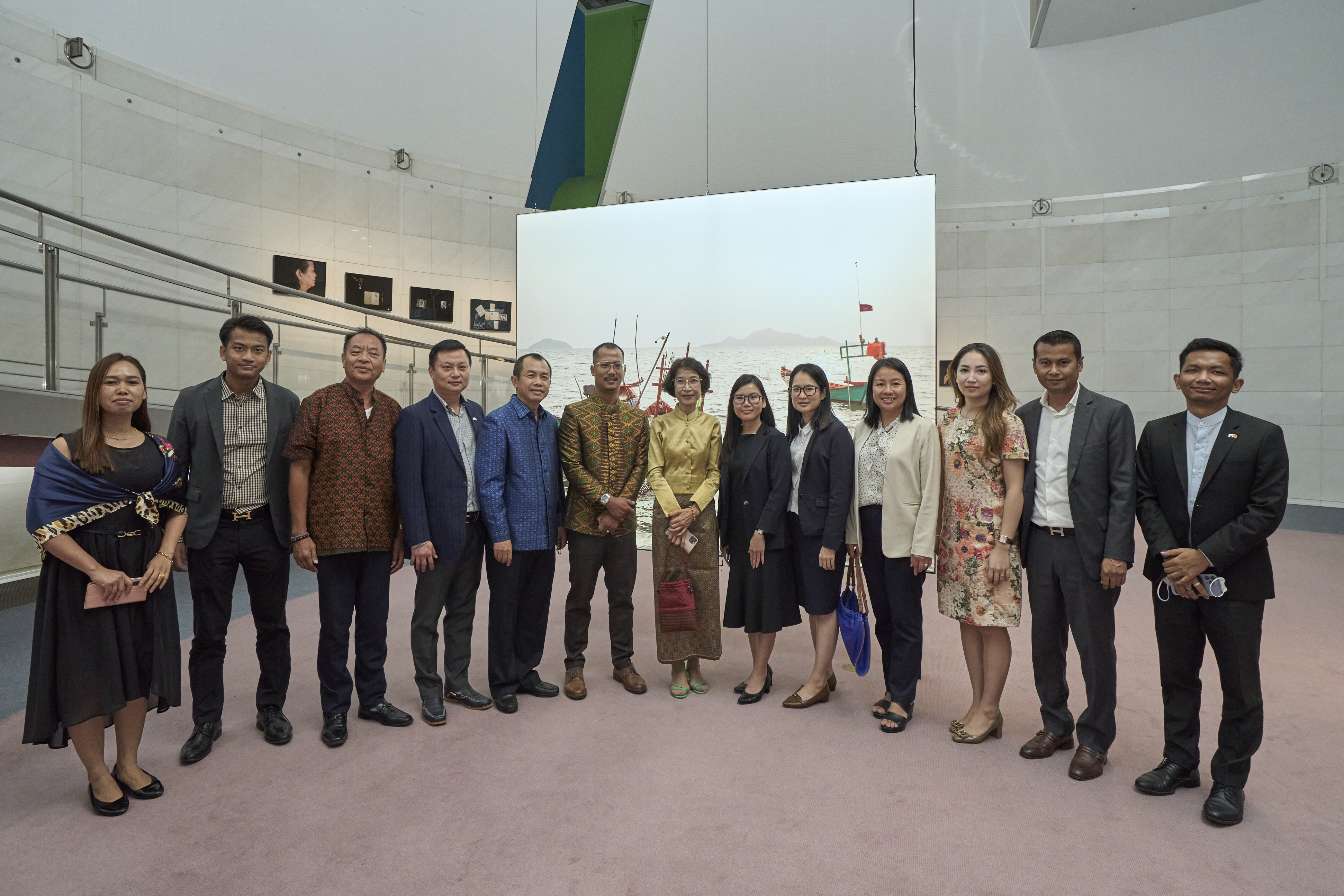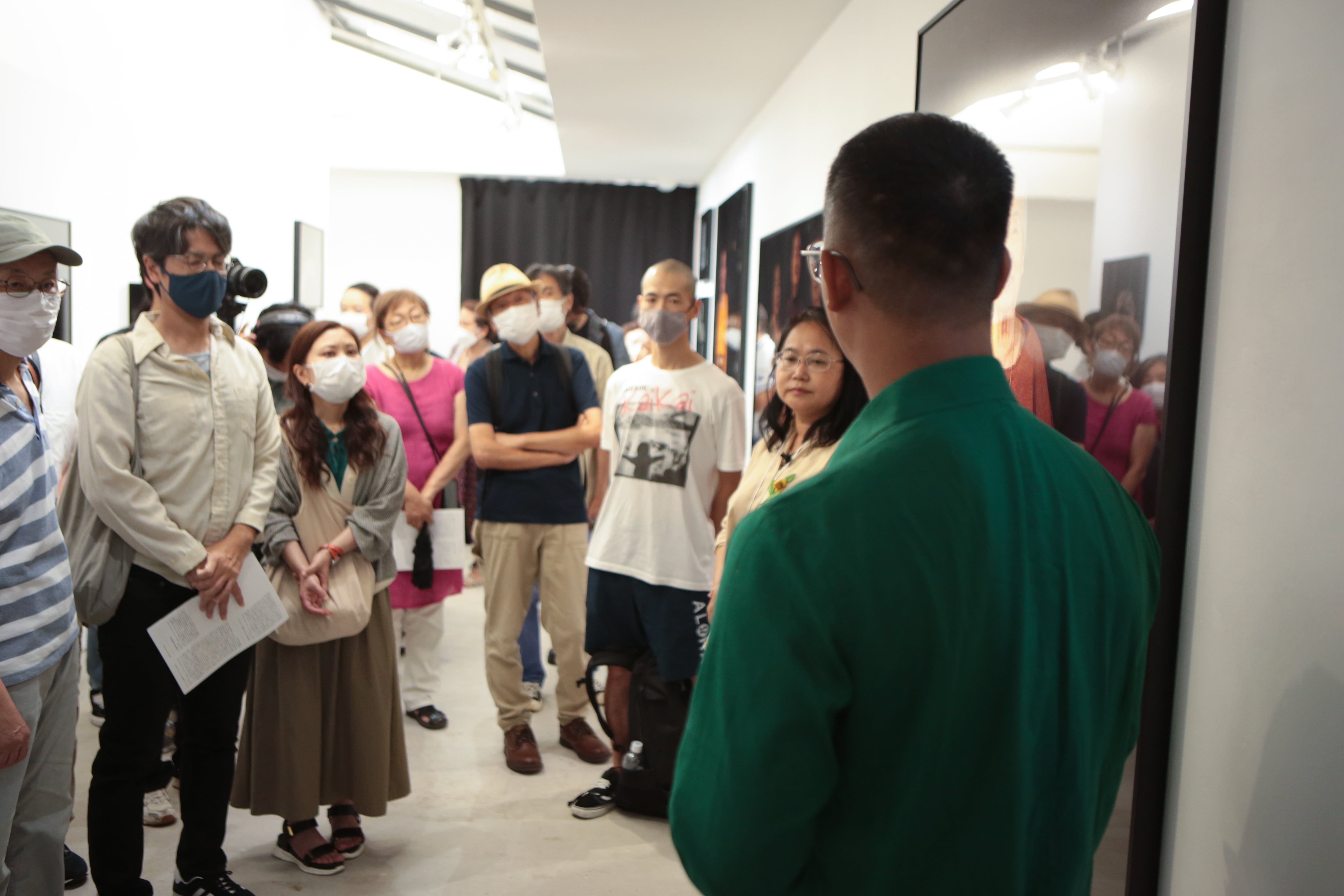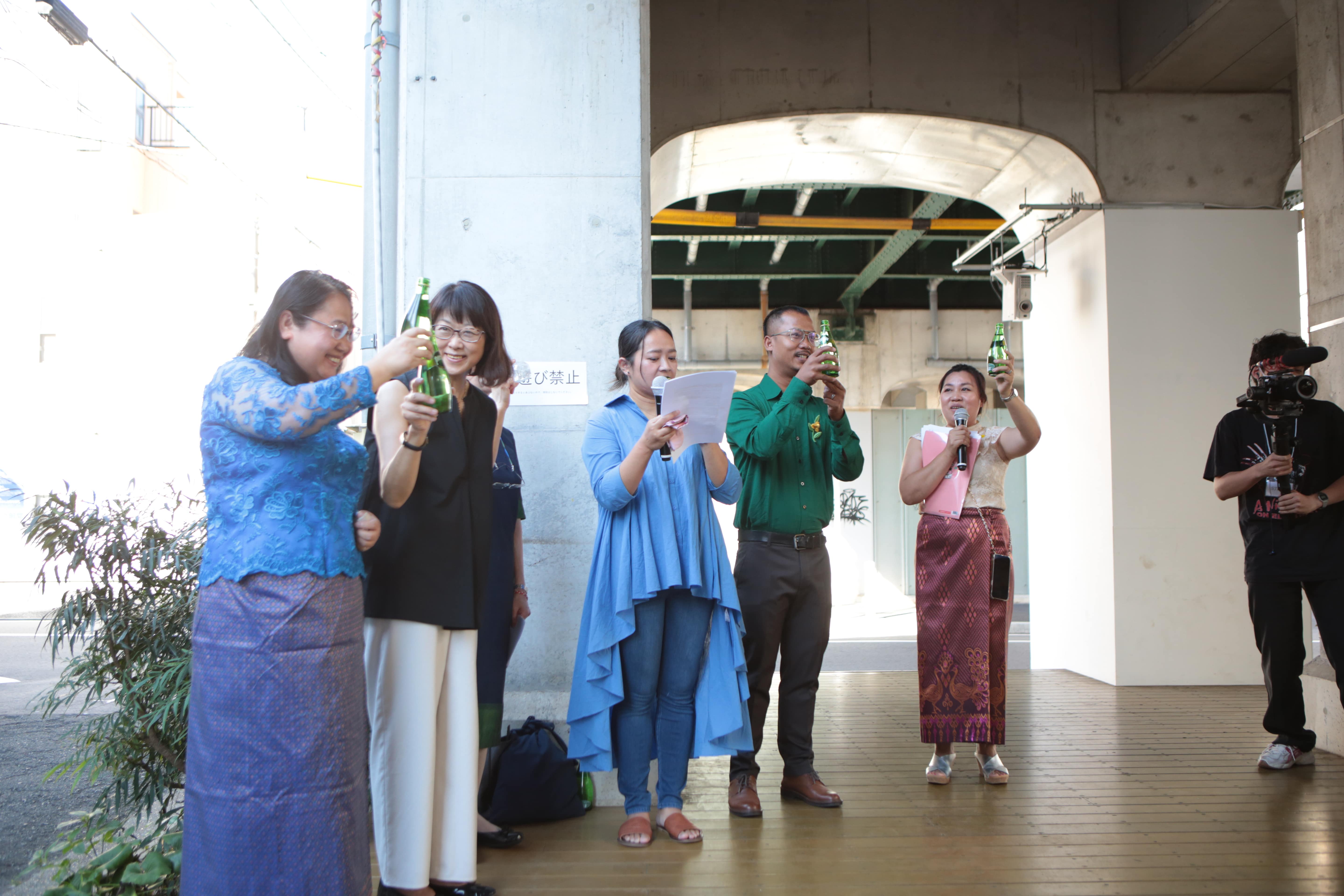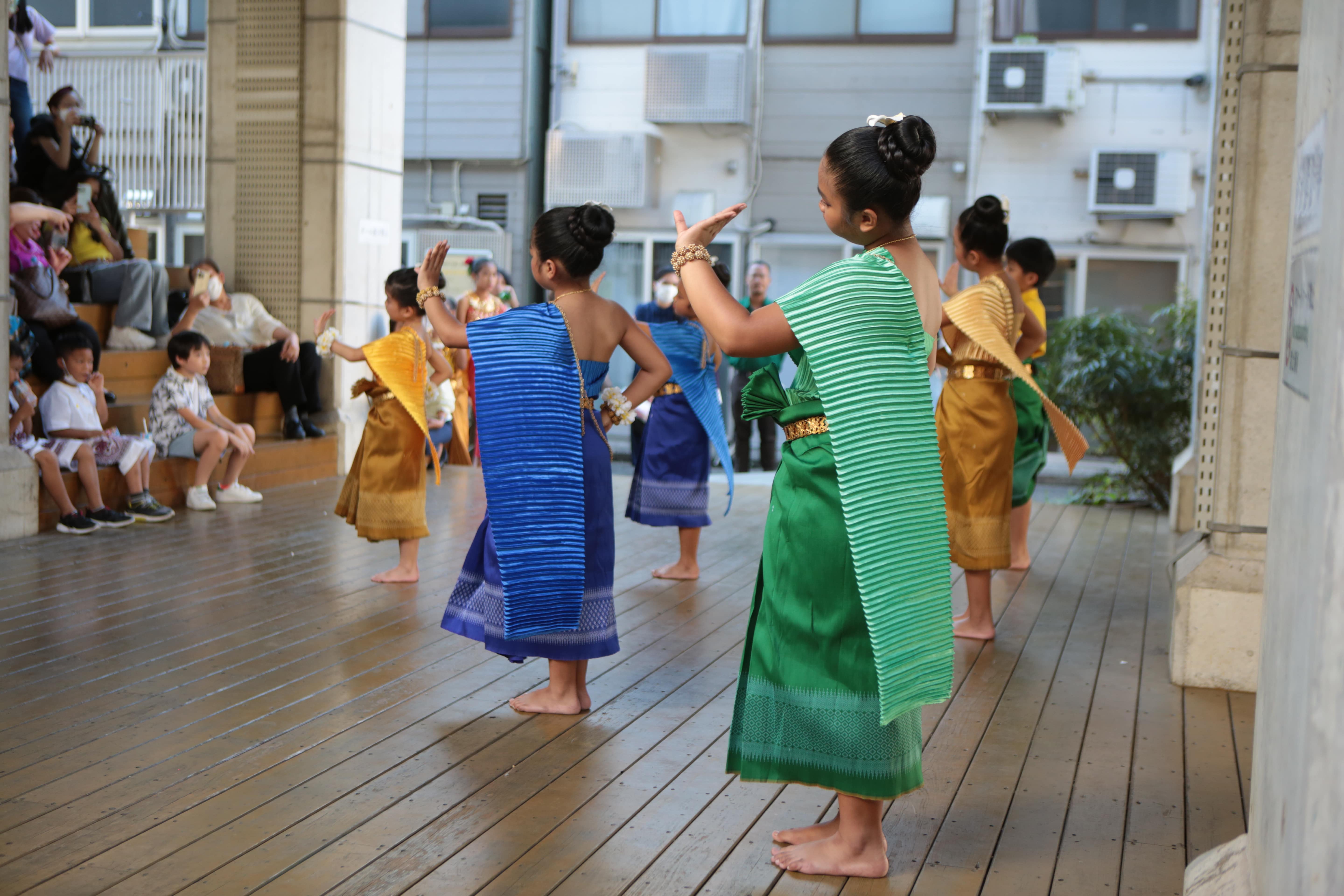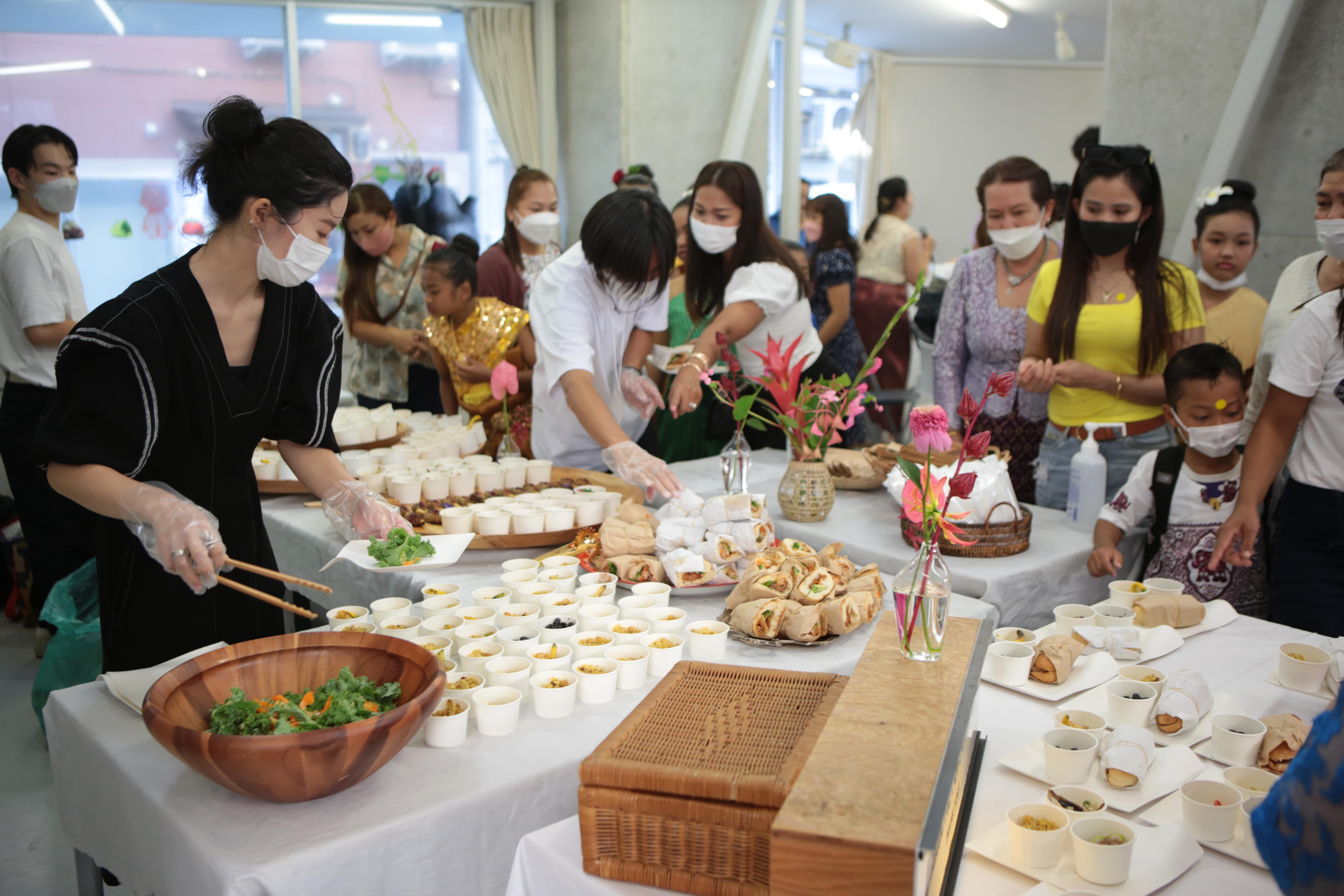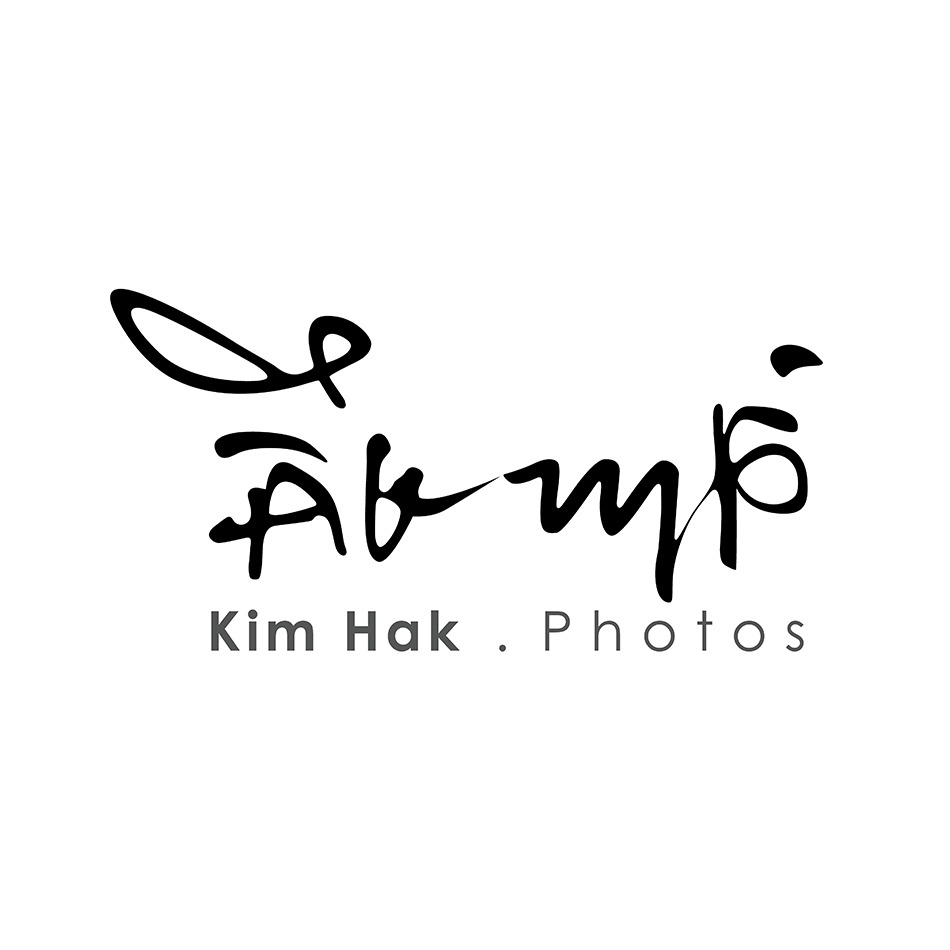Alive IV exhibition opens in Tokyo and Yokohama
26 October 2022
“We were living a normal life when our family was suddenly torn apart and we had to leave our old lives in Cambodia behind. Without [the Khmer Rouge regime], I would have lived a happy life with my family.”
— Him Pheap (Kazuko Takayama), participant in Kim Hak’s Alive IV
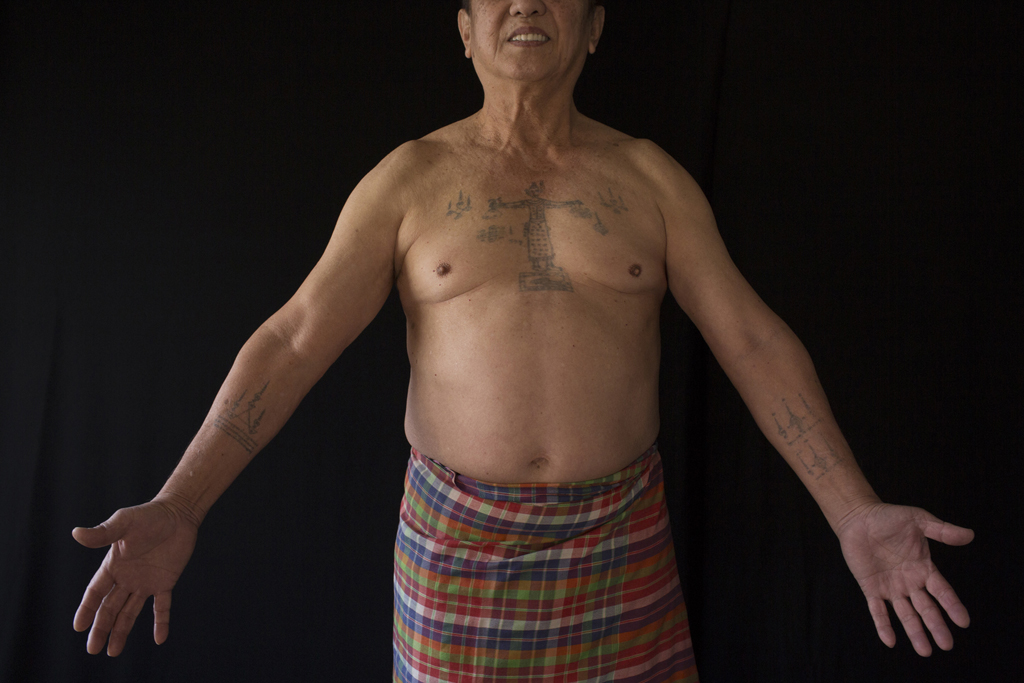
Keo Sarom (Hanamura Minoru), with yantra tattoo and wearing a krama. Photograph by Kim Hak.
Kim Hak, Cambodian lens based artist and long time partner of Rei Foundation, has opened Alive IV, an exhibition of new photographs and recorded histories created in collaboration with people with Cambodian roots living in Japan in 2020. The fourth in the series (the first three being in Battambang, Brisbane and Auckland), Alive uses significant objects as the key to unlock the experiences of Cambodian survivors of the Khmer Rouge era.
With support from the Japan Foundation, Kim Hak travelled in 2020 to meet with people with Cambodian roots living in Japan, mainly in Kanagawa Prefecture. Alive IV comprises around 40 photographs depicting 13 people and their objects. The participants were either stranded in Japan as international students when the Khmer Rouge took power in 1975, or came to Japan as refugees in the 1980s after difficult years living in refugee camps.
With support from the Japan Foundation, Kim Hak travelled in 2020 to meet with people with Cambodian roots living in Japan, mainly in Kanagawa Prefecture. Alive IV comprises around 40 photographs depicting 13 people and their objects. The participants were either stranded in Japan as international students when the Khmer Rouge took power in 1975, or came to Japan as refugees in the 1980s after difficult years living in refugee camps.
Kim Hak has explained why this project is important for the Cambodian communities he works with. “The Khmer Rouge regime and its effects on the people of Cambodia are part of our history. It is important for Cambodians to speak out about it ourselves, it’s a process of healing. It also helps to bridge the gap between our parents' generation and younger generations. Even though the topic of the Khmer Rouge is never an easy one, over 40 years have passed since the regime, and we should now be ready to speak about it.”
Rei Foundation has supported exhibitions in Tokyo and Kanagawa, complemented by public programmes for the general public, media, school groups and Cambodian communities.
In Tokyo, Alive IV was held at Spiral Garden, in the centre of Aoyama. A special opening event was held on Friday August 19, attended by Kim Hak, Cambodian families, people from the Royal Embassy of Cambodia, the Japan Foundation and Rei Foundation, and some NGO representatives. Attendees were treated to a Cambodian feast and a traditional dance performance from members of the community. The entire event was bilingual, with interpreters translating speeches between Khmer and Japanese.
Rei Foundation has supported exhibitions in Tokyo and Kanagawa, complemented by public programmes for the general public, media, school groups and Cambodian communities.
In Tokyo, Alive IV was held at Spiral Garden, in the centre of Aoyama. A special opening event was held on Friday August 19, attended by Kim Hak, Cambodian families, people from the Royal Embassy of Cambodia, the Japan Foundation and Rei Foundation, and some NGO representatives. Attendees were treated to a Cambodian feast and a traditional dance performance from members of the community. The entire event was bilingual, with interpreters translating speeches between Khmer and Japanese.
In addition to the Alive IV works produced in Japan, several photographs from Alive III (the Auckland project) were also exhibited, along with works from another Kim Hak series called Someone, installed on large lightboxes.
Over the course of the opening weekend, Kim Hak gave three gallery tours to members of the public. A group of lucky children attended a photography workshop with the artist, who were then tasked with photographing their own family treasures.
Spiral Garden is a popular gallery with a lot of foot traffic and a busy café. It was chosen as a venue for this exhibition due to its access to large audiences, who may not know about the Khmer Rouge or the experiences of the Cambodian diaspora living in Japan.
Over the course of the opening weekend, Kim Hak gave three gallery tours to members of the public. A group of lucky children attended a photography workshop with the artist, who were then tasked with photographing their own family treasures.
Spiral Garden is a popular gallery with a lot of foot traffic and a busy café. It was chosen as a venue for this exhibition due to its access to large audiences, who may not know about the Khmer Rouge or the experiences of the Cambodian diaspora living in Japan.
Kim Hak wanted to reach people outside of the Cambodian communities he worked with, and feels strongly that the messages have relevance beyond these communities. “Although Alive IV is a story of the displacement of Cambodians who came to Japan, there are many other groups who migrated to Japan around the same time for the same or similar reasons; escaping conflict and war. This is still happening in different parts of the world, creating newly displaced people. It’s a universally relevant story we should all care about.”
Alive IV closed at Spiral Gallery on 28 August and opened at Yokohama’s Site-A Gallery on 9 September, running until 25 September. Site-A Gallery is located in Koganecho Area Management Center and was chosen for its proximity to Kanagawa (where many of the Cambodian families live), and for its smaller size, making it better suited for more intimate, community-focused events.
Alive IV closed at Spiral Gallery on 28 August and opened at Yokohama’s Site-A Gallery on 9 September, running until 25 September. Site-A Gallery is located in Koganecho Area Management Center and was chosen for its proximity to Kanagawa (where many of the Cambodian families live), and for its smaller size, making it better suited for more intimate, community-focused events.
Along with the presentation of the children’s photography projects, a public talk was held with Kim Hak and Cambodian Japanese participant Setharin Suwai. Of special importance to Rei Foundation was an discussion between Cambodian participants in Japan and their Auckland counterparts who went through a similar process with Kim Hak in 2018. This event took place at Site-D, next to the exhibition at Site-A, and with the help of an online link it included participants and audience members in New Zealand, Cambodia and elsewhere, with real-time interpretation taking place in Khmer, Japanese and English to ease the understanding of all participants.
Him Pheap participated in Alive IV, sharing both her story and treasured objects with Kim Hak to photograph. Although the process took her out of her comfort zone, Pheap was pleased to be a part of this project. “I trusted Hak's character. He took photographs of me as I spoke about my past and my thoughts. I was a bit embarrassed when they were shown at the exhibition, but I also felt proud of Hak, whose work has made such a strong impact. I cherish my memories, and hope that what happened to us will not happen to anyone else.”
Return to Journal




